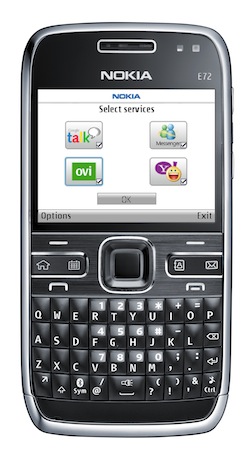 When Nokia introduced its now iconic E71 smartphone in July 2008, it represented a huge leap over its predecessor, the E61i. Nokia’s answer to Research In Motion’s BlackBerry range, the E71 was slimmed down, with a much faster processor, and refined software.
When Nokia introduced its now iconic E71 smartphone in July 2008, it represented a huge leap over its predecessor, the E61i. Nokia’s answer to Research In Motion’s BlackBerry range, the E71 was slimmed down, with a much faster processor, and refined software.
It’s not a stretch to suggest that the E71, which is now used by millions of corporate types around the world, was Nokia’s best-ever business smartphone.
In the world of cellular technology, however, manufacturers cannot afford to stand still for a moment. So, despite the E71 being introduced only 18 months ago, Nokia has already come up with its successor, the E72.
Given that the E71 was such a solid handset — I know, I’ve used one on and off for more than a year — it’s perhaps not surprising that Nokia hasn’t been too adventurous with the E72. Instead, it’s chosen to improve on the E71 incrementally rather than overhaul its design.
The E72, which costs about R5 500 without a contract, is the same size as its predecessor, although its black, rather than silver, finish makes it feel slightly bigger.
The colour also makes it look more like a BlackBerry, a deliberate move on Nokia’s part I suspect.
The most noticeable change on the E72 is its improved performance. The 600MHz ARM processor means opening applications and switching between them is significantly faster than on the E71.
The Symbian software has also been upgraded, offering a richer user experience with better graphics. Nokia’s Ovi application store is now included on the phone.
There’s a 5-megapixel camera, against the E71’s 3,2-megapixel shooter, though the new phone’s camera and LED flash protrude a little too much from the rear of the device.
The other big change is the introduction of the “Optical Navi Key” feature, instead of the standard D-pad joystick. It makes browsing Web pages and scrolling through e-mail slightly easier; though on its own it’s not enough to warrant upgrading from the E71.
Everyone else that came with the E71 is still there, including assisted GPS and high-speed packet access aerials. The headphone jack is now the industry-standard 3,5mm, against the E71’s 2,5mm.
All in all, the E72 is a solid improvement on its predecessor. But it doesn’t come close to the giant leap between the E61i and E71.
Nokia knows not to mess too much with a good thing. — Duncan McLeod, TechCentral
- Subscribe to our free daily newsletter
- Follow us on Twitter or on Facebook




